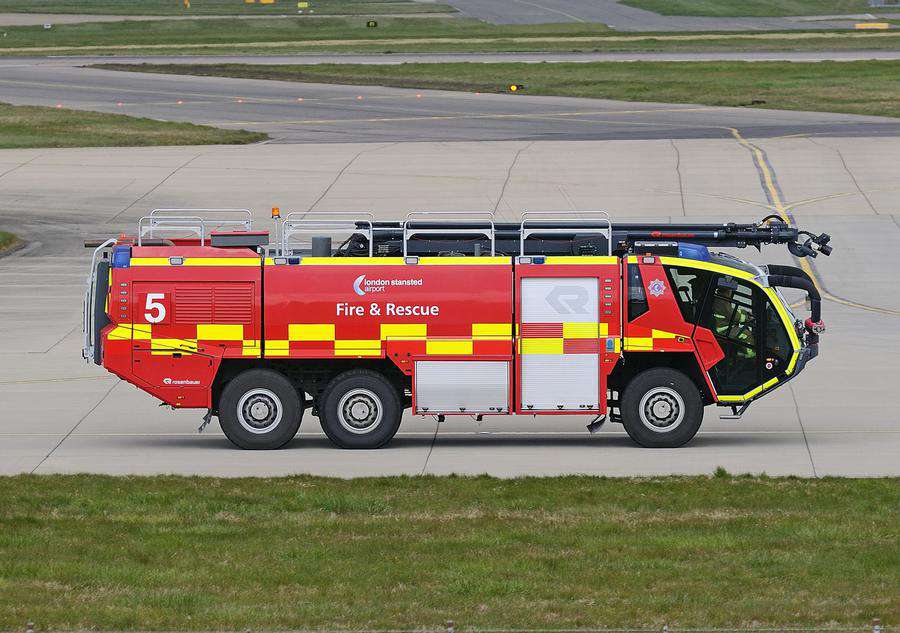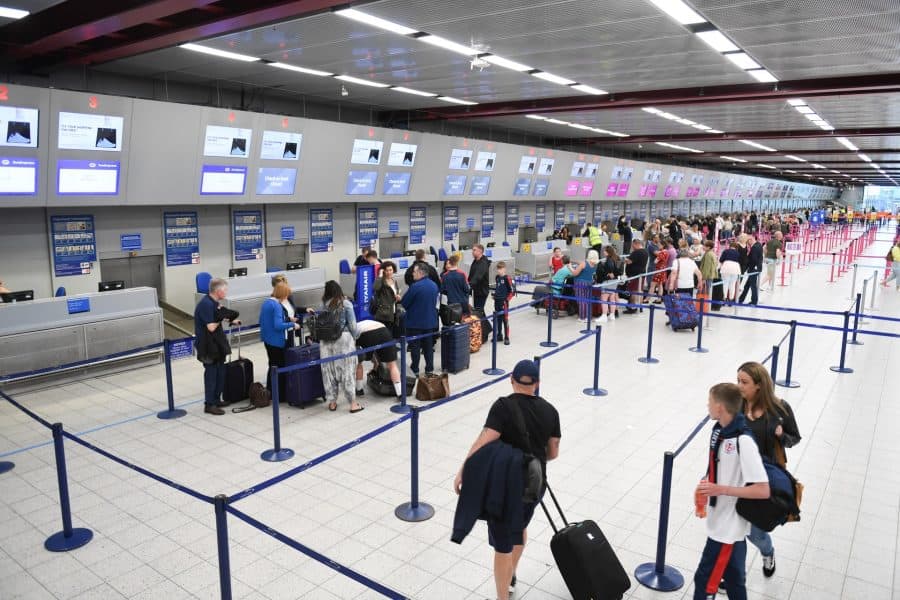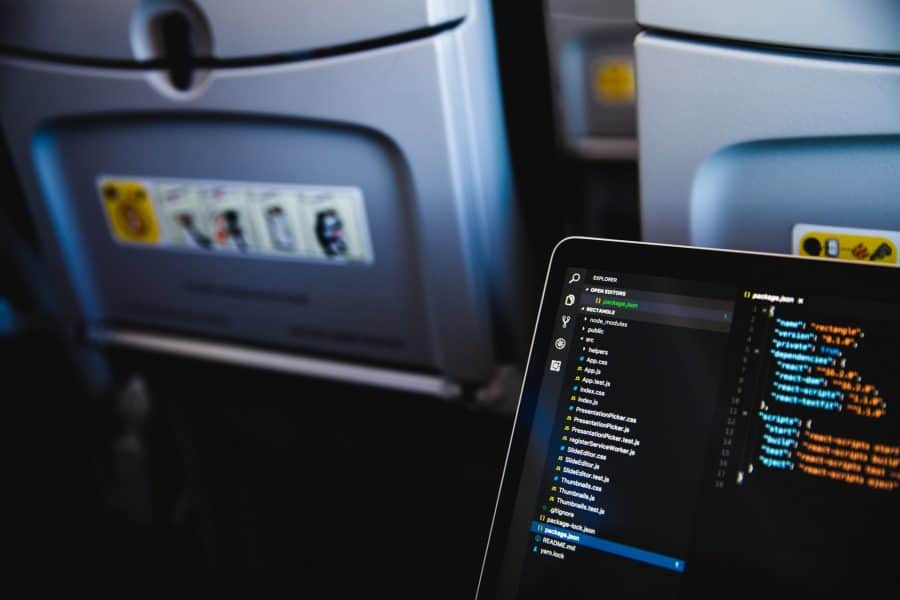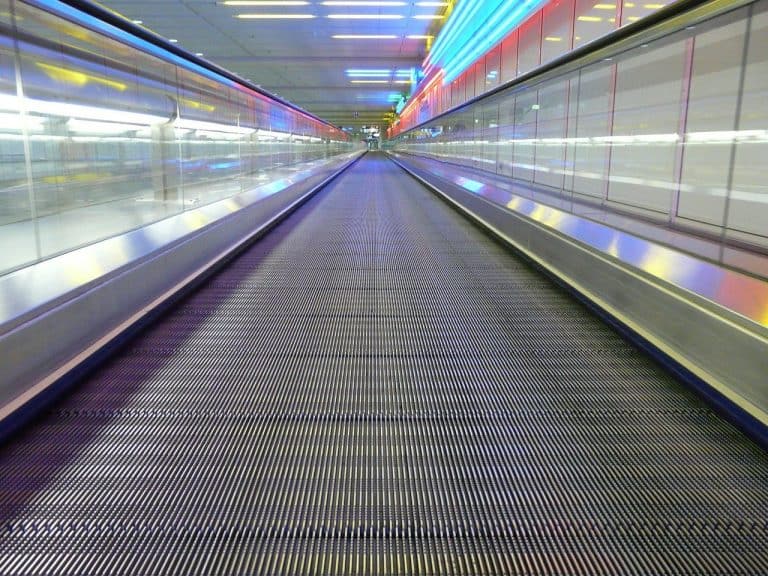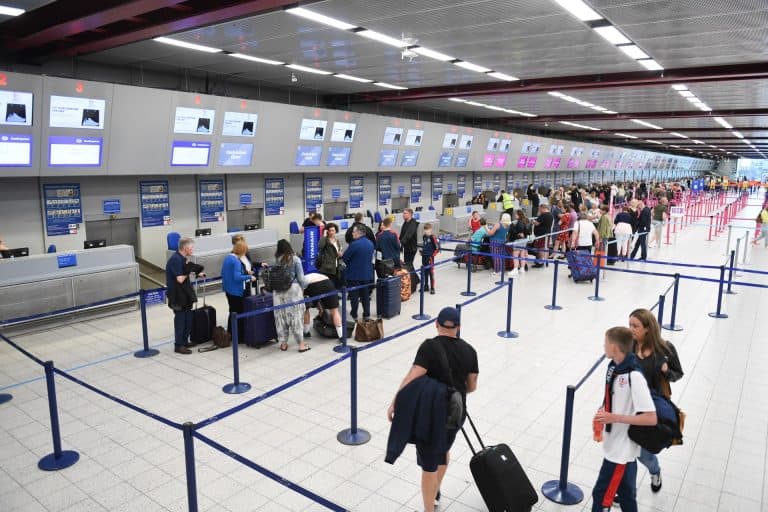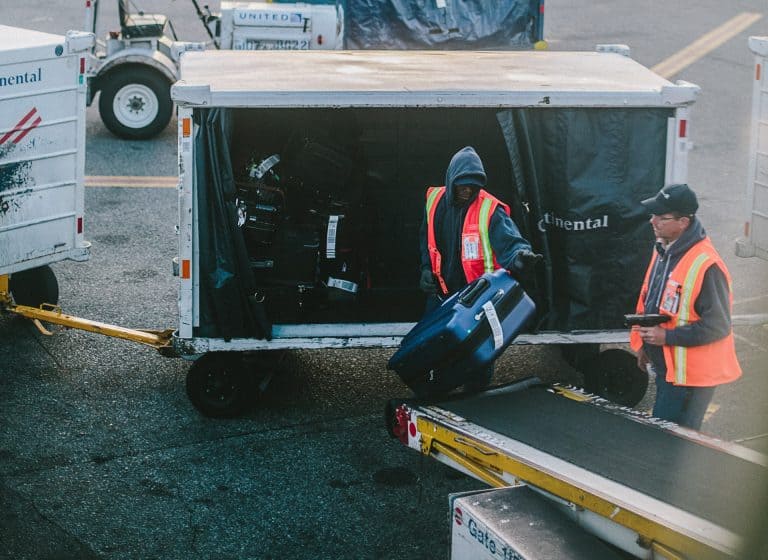A Complete Guide to Airport Fire Trucks
If a fire were to break out on an aircraft full of passengers, it would be up to the airport firefighters to prevent a potential tragedy from occurring. They have a range of bespoke fire trucks at their disposal, specifically designed to tackle such an event. But what makes airport fire trucks perfect for the job?
Before going into the article, it’s worth stating that flying is one of the safest forms of transport and tragic incidents are thankfully rare. This is thanks to the regulation, procedures, and equipment on hand to prevent any issues from occurring in the first place.
What is the job of the ARFF? What does it stand for?
All airports with scheduled airline or charter companies (known as a Tier 1 airport) are required to have stationed firefighters and equipment during the period when flights are operating.
This is referred to as the Aircraft Rescue and FireFighting (ARFF) service.
If an aircraft is involved in an accident or incident, the job of the ARFF is to provide:
- Emergency response ? Respond rapidly to an accident
- Mitigation ? Prevent future incidents from occurring or reduce the damage from the current emergency
- Evacuation ? Put into place procedures to get everyone off the aircraft
- Rescue of passengers and crew ? People may be lost within a wreckage or trapped on the aircraft that require attention
Due to the potential severity of an aviation incident, a variety of specialized trucks is needed to effectively respond to the range of emergencies and situations that could occur.
This article investigates the trucks they use and what makes them special.
What makes airport fire trucks unique? How are they different?
The biggest priority of the ARFF attending an aircraft accident is to put out any fires as soon as possible.
Aircraft carry large volumes of fuel (called kerosene) as it takes a lot of energy to fly such a large and heavy vehicle over long distances.
If the fire reached the fuel tanks, then this would be disastrous. Speed is therefore of the essence.
What makes AARF trucks unique (compared to say a conventional fire truck) is they are designed around reaching and putting out fires as quickly as possible.
This is also the job of conventional firefighters, however, there is typically slightly less urgency (because buildings aren’t typically filled with literal jet fuel). They also respond to a wider range of emergencies so have a larger array of functions.
The key to suppressing an aircraft fire is to absolutely blitz it with as much liquid as possible.
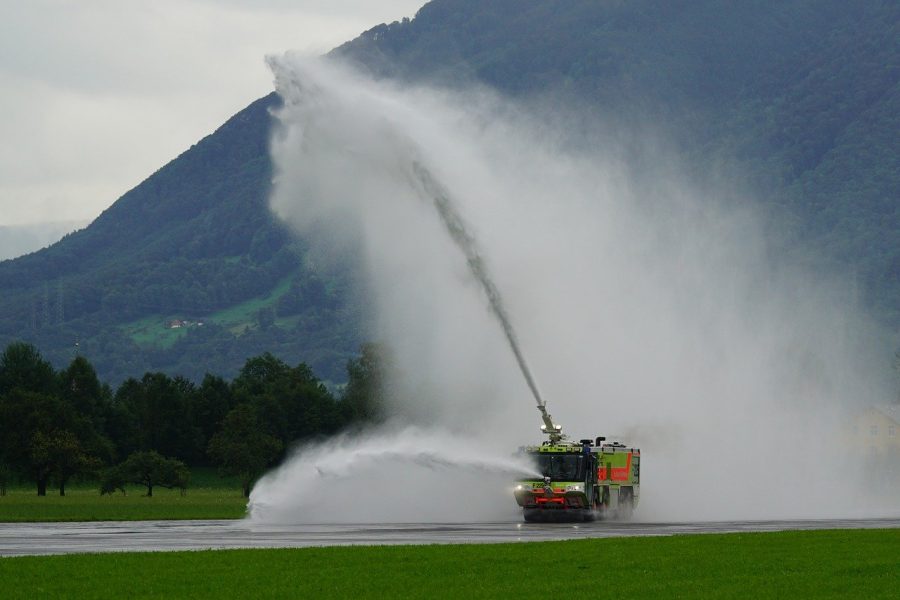
To do this AARF trucks have nozzles mounted onto the front of the vehicle and the direction can be controlled from within the cabin.
This has 2 benefits because it means the firefighters do not have to get out of the vehicle and prepare the hose (which is time-consuming) and reduces the need for them to get too close to a potentially explosive aircraft.
These nozzles can shoot a humongous volume of water very quickly. For responding to emergencies involving large aircraft, the trucks can discharge around 1,600 gallons per minute.
For some context, a pressure washer can only discharge a measly 5 gallons per minute?
AARF trucks also carry a secondary extinguishing agent which is released through a separate nozzle.
This is a foamy substance that can coat areas with spilled jet fuel, which cuts off the oxygen supply and helps put the fire out.
Conventional fire trucks often rely on fire hydrants as a water supply this means their onboard water supply does not have to be so large.
AARF trucks do not have this luxury (as the emergency could be anywhere on the airfield) and must carry their own water supply.
This means they have enormous water tanks that can carry above 5,000 gallons in multiple tanks.
Another tool at the ARFF truck’s disposal is they have minimum speed requirements.
They must have a minimum top speed of 70MPH and accelerate from 0 to 50 in 25 seconds or less so they can attend to emergencies quickly.
This may not sound fast when compared to a standard car, but for a vehicle with such large quantities of fluid, this is very impressive!
Can airport fire trucks be used as regular fire trucks in the city?
In theory, both regular fire trucks and ARFF trucks have the same goal; to put out any potential fires and save lives.
However, due to the nature of the incidents they deal with both trucks have slightly different functions.
So, could an AARF truck be used as a regular fire truck? This depends slightly on the emergency at hand.
The AARF trucks has a few advantages over a conventional fire truck:
- A typical AARF truck is faster accelerating with a higher top speed than a conventional fire truck and hence could respond faster to a crisis.
- AARF trucks can carry far more water within its tank. This may be useful for attending big fires in a remote area where no fire hydrants are available.
There are also disadvantages to AARF trucks as opposed to conventional fire trucks:
- The large water storage needed results in the wheelbase being much larger and wider than conventional trucks. In a close urban environment, there may be issues fitting past parked vehicles or other obstructions in narrow lanes.
- There is also less space for the storage of important equipment such as a hose bed. A hose bed houses the long hoses used to fight fires in places a fire truck cannot reach. This may limit the range the fire fighters can reach.
- ARFF trucks have a quick blitz approach to tackle fires. This means a large amount of liquid is pumped out very quickly. This is perfect for quickly stopping an engine from exploding, although this is not so great for putting a fire out in a building full of people.
To conclude, can an AARF truck be used as a conventional fire truck? Yes, in some circumstances.
They may be well suited to tackling a rural chemical fire for example (if the roads permit) but may be less equipped to tackle a fire in a skyscraper in a tight urban environment.
However, the main reason they are not used by conventional firefighters is the price.
A standard fire engine costs between $300,000-$400,000. This is not exactly cheap but is a bargain when compared to an AARF truck which can cost between an eye-watering $750,000 and 1.5 million dollars!
Why are airport fire trucks lime-yellow?
In an emergency, it is vital a fire truck is easily recognizable, so traffic knows to get out of their way and to provide reassurance that help has arrived.
Fire trucks have historically been red (since the early 1900s). To avoid any potential confusion, the status quo has been maintained ever since. But is red the best color to use?
As it turns out the answer may be no. Human factors and ergonomics research finds that lime-yellow fire vehicles are less likely to be involved in accidents.

An example is a study by Solomon involving nine cities and 750,000 fire vehicle trips. This found that lime-yellow fire trucks were half as likely as red trucks to be involved in intersection accidents.
High-visibility jackets are also lime-yellow for the same reason. They reflect more light and are therefore easier to see in low lighting.
As safety is paramount at an airport, any potential reduction in the number of incidents (however small) should be utilized. Airport fire trucks are therefore painted lime-yellow so that they are more visible and are thus less likely to be in an accident themselves.
Are there different types of airport fire trucks?
There are many different types of AARF trucks. What variant is used is dependent on which aircraft are operating at the airport.
Different airport regulators (for US airports the FAA) set out the minimum requirements which AARF trucks must reach. This is dependent on what type of aircraft requires an emergency response.
The larger the aircraft, the more fuel, and passengers are onboard, therefore requires a bigger response.
Aircraft types are split into 10 different aircraft categories numbered from 1-10. Aircraft in category 1 are the smallest and 10 the biggest.
There are then 4 different requirements for each of the aircraft category, this describes the minimum:
- Combined amount of water the trucks can hold
- Combined amount of complementary extinguishing agent (the foam)
- Number of AARF trucks that attend the emergency
- Combined amount of fluid they can discharge
A detailed list of the different aircraft types and their minimum requirements can be found in Table 1 and Table 2 here.
The exact number of trucks and which models of ARFF trucks are used can vary greatly by airport depending on their requirements.
For example, at London City airport they even have firefighting boats, due to the airport being engulfed by the river Thames as well as having notoriously short runways.
To quickly respond to an aircraft that may have landed too long/short of the runway or has failed to take-off, 2 firefighting boats are always on duty at either end of the runway.
A large airport will have multiple fire stations housing multiple AARF trucks across the airfield. This ensures a minimum time to attend an emergency is achieved no matter where it occurs.
To summarize, smaller airports operating only aircraft in category 1-3 (for commercial use think small private jets such as the Embraer Phenom 300) might only have a single small fire truck such as the Airwolf C2, pictured below:

Whereas an airport operating category 9 and 10 aircraft (e.g. A380, A340 and B747) would require at least 3 large fire trucks such as the Oshkosh Striker 8×8, seen below.

More from AirportNerd
The Complete Guide to Airplane Window Shade Etiquette
Picture this. You are sitting in the most undesired seat on the airplane, the middle…
Why Do Airlines and Airports Use 24-Hour Time?
The culprit of many missed flight connections: distinguishing between 12-hour and 24-hour clocks. While most…
Why Are Airports Named After U.S. presidents?
Donald Trump has been in the news for wanting to rename Palm Beach International Airport…
Why Do Laptops Get Special Attention at Airport Security?
?Shoes off, laptops out, liquids in zip lock bags, all in separate trays!? Frequent flyers…

